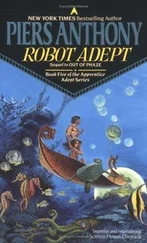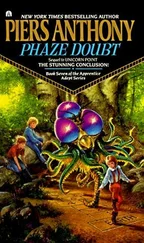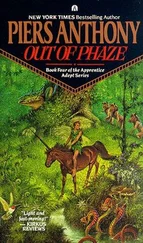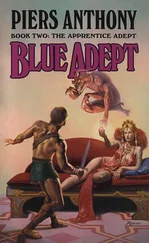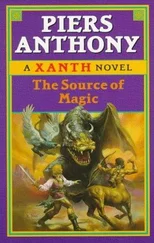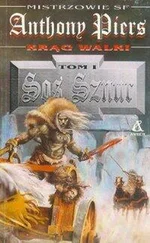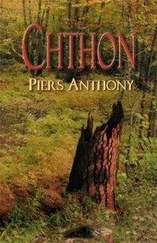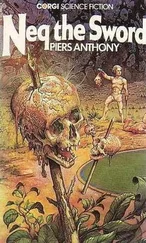Piers Anthony - Split Infinity
Здесь есть возможность читать онлайн «Piers Anthony - Split Infinity» весь текст электронной книги совершенно бесплатно (целиком полную версию без сокращений). В некоторых случаях можно слушать аудио, скачать через торрент в формате fb2 и присутствует краткое содержание. Год выпуска: 2011, Жанр: Фэнтези, на английском языке. Описание произведения, (предисловие) а так же отзывы посетителей доступны на портале библиотеки ЛибКат.
- Название:Split Infinity
- Автор:
- Жанр:
- Год:2011
- ISBN:нет данных
- Рейтинг книги:5 / 5. Голосов: 1
-
Избранное:Добавить в избранное
- Отзывы:
-
Ваша оценка:
- 100
- 1
- 2
- 3
- 4
- 5
Split Infinity: краткое содержание, описание и аннотация
Предлагаем к чтению аннотацию, описание, краткое содержание или предисловие (зависит от того, что написал сам автор книги «Split Infinity»). Если вы не нашли необходимую информацию о книге — напишите в комментариях, мы постараемся отыскать её.
Split Infinity — читать онлайн бесплатно полную книгу (весь текст) целиком
Ниже представлен текст книги, разбитый по страницам. Система сохранения места последней прочитанной страницы, позволяет с удобством читать онлайн бесплатно книгу «Split Infinity», без необходимости каждый раз заново искать на чём Вы остановились. Поставьте закладку, и сможете в любой момент перейти на страницу, на которой закончили чтение.
Интервал:
Закладка:
They went on: a white unicorn, a black unicorn, and a wolf. The dark fog swirled thickly about the castle, helping to conceal them. But could the Adept really be ignorant of their presence? It was possible; why should the Black Adept allow them to intrude, when he could so easily hurl a nasty spell at them, unless he were not paying attention? Surely he had better things to do than sit and watch for trespassers. And if the Adept happened to be dead, there should be no danger anymore. So Stile reasoned, reassuring himself.
Yet somehow he did not feel reassured.
Kurrelgyre made a low growl of warning. They stopped. The wolf had his nose to the ground, frozen there. Stile stooped to look—and his knees gave a warning shock of pain, and the unicorn image halfway buckled. Mustn’t do! But he saw what it was: a black line, stretching across the basalt.
Could it amount to a trip wire? It was a color-line, not a wire, but with magic it could perform the same function. That would explain why the Adept was not paying attention; he depended on his automatic alert. “We’d better pass without touching any lines,” Stile murmured. “They might be the Adept’s alert-lines, no pun.”
They all high-stepped carefully over the line. Soon there was another. This one was thicker, as if drawn with coagulating paint. Then a third, actually a ridge. And a fourth, set closer to the last, like a miniature wall.
“Something funny here,” Stile said. “Why make an alarm-line this solid? It only calls attention to itself.”
Yet there was nothing to do but go on over. Stile’s apprehension was abating as his perplexity grew. He had accepted the notion of magic as a way of life—but why should anyone surround himself with thickening lines? That hardly made sense.
The lines came more often now, each more formidable than the last. It became evident that the black castle was not a mere edifice of stone or brick, but the innermost manifestation of a rapidly solidifying net-work of line-walls. When the walls passed waist height on Stile, and were set only two meters apart, he concluded that jumping them was now too risky; they were bound to touch one accidentally and set off the alarm. If this really were an alarm system. Stile now feared it was something quite different, perhaps an elaborate architectural trap. But it might be no more than a progressive deterrent to intrusions such as theirs. A passive defense, showing that the Black Adept was not really the monster he was reputed to be. Maybe.
“I think we had better walk between walls for a while,” Stile said. “It is either that, or start climbing over them. This thing is turning into a maze, and we may be obliged to follow its rules.” And he wondered, nervously: was that the way of Adepts? To force intruders, stage by stage, into a set mold, that would lead inevitably into their corruption or destruction? Was that the way of all Adept-magic? In that case, the fears of the unicorn and werewolf with respect to Stile him-self could be well founded. Suppose he was, or had been, the Black Adept? That, given limitless power, he had chosen to isolate himself in this manner—and would do so again, given the power again? Helping no one, having no friends? Power corrupted ...
They turned left, walking between walls. As it happened, it was indeed a maze, or at least a complicated labyrinth. The inner wall turned at right angles, making a passage toward the interior, and gradually elevated in height. Soon a ceiling developed, from an extension of one wall, making this a true hall. The passage kept curving about, usually sharply, often doubling back on itself, so that it was impossible to try to keep track of direction. “Kurrelgyre, your nose can lead us out again?” Stile inquired nervously. The wolf growled assent.
The line-labyrinth seemed to continue on indefinitely. Wan light fused in from somewhere, allowing them to see—but there was nothing to see except more blank walls of black material. The castle—for they had to be well inside the edifice proper now—was as silent as a burial vault. That hardly encouraged Stile.
On and on they went. Every time it seemed they were getting somewhere, the passage doubled back and paralleled itself for another interminable distance—then doubled back again. Was this whole castle nothing but many kilometers—many miles, he corrected him-self—of passages? This passage continued to get narrower, becoming more like a tunnel, until Neysa was having difficulty making the turns. Her horn projected in front far enough to scrape a wall when she tried to make a hairpin turn, and her effort to avoid such con-tact put her into contortions and slowed her consider-ably. But she didn’t want to change form, in case they were still under observation; that would betray her special talent. In addition, she still wore the saddle, which would become a liability in her other form. It seemed her own clothing transformed with her, but not things originating externally. And their supplies were in the saddlebags.
“Enough,” Stile said at last. “We can wander forever in this mess, and die of starvation when our supplies run out. Let’s tackle the dread Adept forthrightly!” And he banged his fist into the wall.
That surface was oddly soft and warm, as if only recently extruded from some volcanic fissure. It gave under the impact, slightly, then sprang back with a twang. The sound reverberated along the hall, and on out of sight; it seemed to be traveling along the same convolutions they were traveling, but much faster, tirelessly amplifying as it went. Soon the whole region was humming with it, then the castle itself.
Gradually it fudged, as the harmonics of different walls overlapped and muted each other, and finally died away amorphously. “Must have come to the end of the line,” Stile said. “Let’s go on, not worrying about con-tact.”
They moved on more rapidly. At every sharp corner, Neysa’s horn scraped, and the twang reverberated.
Nothing else happened.
Then at last the walls opened out into a moderate chamber. In the center stood a great black dragon. The creature opened its mouth to roar, but no sound came forth, only a tongue like a line drawn by a pen.
Stile contemplated the creature. He had never seen a living dragon before, but recognized the general form from the literature of legend. Yet this was an unusual variant. The creature, like the castle, seemed to be made of thickened lines. Its legs were formed of loops, its body of closely interlocked convolutions, and its tail was like knitwork. It was as if it had been shaped meticulously from a single line, phenomenally intricate. Yet it was solid, as a knit sweater is solid.
The dragon stepped forward, showing its blackline teeth. Stile was so fascinated by the linear effect that he hardly was concerned for his own safety. He recalled the puzzle-lines that had intrigued him as a child, in which the pen never left the paper or crossed itself. The most intricate forms could be made along the way by the traveling line—flowers, faces, animals, even words —but the rules were never broken. The challenge was to find the end of the line, in the midst of the complex picture.
This dragon, of course, was three-dimensional. Its lines did touch, did cross, for it was tied together by loops and knots at key places. But the principle remained: the line, though knotted, never terminated, never divided. The whole dragon, as far as Stile could tell, was a construct of a single thread.
Stile became aware of the posture of his companions. Both were facing the dragon in a state of combat readiness, standing slightly ahead of Stile.
“Enough of this!” he exclaimed. “This is my quest; you two should not endanger yourselves in my stead. I’ll fight mine own battle.” He stooped to pull off his unicorn socks—and again his knees flared in pain, causing him to drop ignominiously to the floor. He kept forgetting his injury at critical times!
Читать дальшеИнтервал:
Закладка:
Похожие книги на «Split Infinity»
Представляем Вашему вниманию похожие книги на «Split Infinity» списком для выбора. Мы отобрали схожую по названию и смыслу литературу в надежде предоставить читателям больше вариантов отыскать новые, интересные, ещё непрочитанные произведения.
Обсуждение, отзывы о книге «Split Infinity» и просто собственные мнения читателей. Оставьте ваши комментарии, напишите, что Вы думаете о произведении, его смысле или главных героях. Укажите что конкретно понравилось, а что нет, и почему Вы так считаете.

